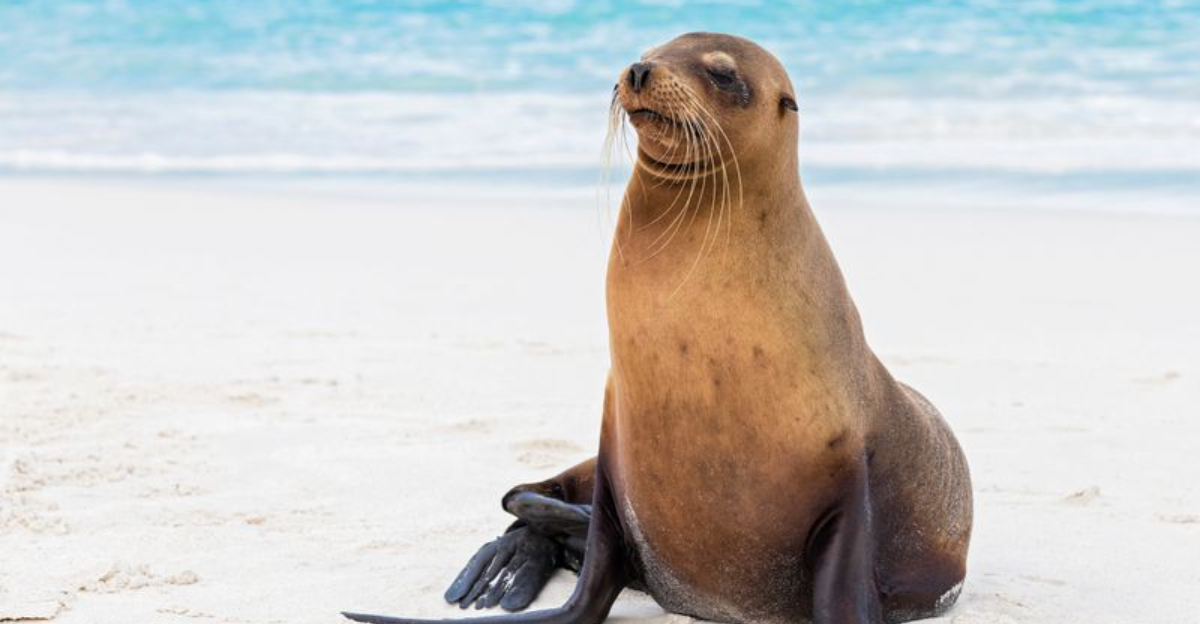Discover the remarkable diversity of wildlife in the Galápagos Islands, a truly unique ecosystem unmatched anywhere else on Earth.
This enchanting archipelago, nestled in the Pacific Ocean, offers a rare glimpse into nature’s most fascinating creations. Join us as we explore some of the most incredible species that make the Galápagos their home, each with its own captivating story.
1. Galápagos Giant Tortoise

The Galápagos Giant Tortoise is one of the most iconic creatures on the islands. These ancient beings can live over 100 years, with some even reaching 150.
Their massive domed shells and elephantine movements make them a sight to behold. Found on several islands, including Santa Cruz and Isabela, these tortoises have adapted uniquely to their environments.
Each island’s tortoise population exhibits slight variations. Some have saddleback shells for feeding on higher vegetation, while others have domed shells suited for ground-level grazing.
These differences result from the islands’ diverse ecosystems, proving Darwin’s theories of evolution. Visitors often encounter them at the Charles Darwin Research Station, where conservation efforts are ongoing.
These gentle giants face challenges like habitat loss and introduced species, but dedicated conservationists are working tirelessly to ensure their survival.
Walking alongside one of these tortoises is a humbling experience, offering a direct connection to the natural world’s wonders. Whether you’re a wildlife enthusiast or simply curious, meeting these magnificent creatures is an unforgettable experience.
2. Marine Iguana

They’re the only iguanas known to swim and forage in the sea! These remarkable reptiles have adapted to a marine lifestyle, feeding primarily on algae. Their flattened tails and strong limbs enable them to navigate the rocky underwater landscapes.
Found mostly in the coastal areas, they bask under the sun to regulate their body temperature after diving in the chilly waters. Their dark coloration helps absorb heat quickly, an essential trait for survival. During the mating season, males display vibrant colors, ranging from greens to reds, to attract females.
Unfortunately, these iguanas face various threats, including climate change and introduced predators. Conservationists are actively working to protect their habitats and ensure that future generations can witness these extraordinary creatures.
3. Blue-Footed Booby
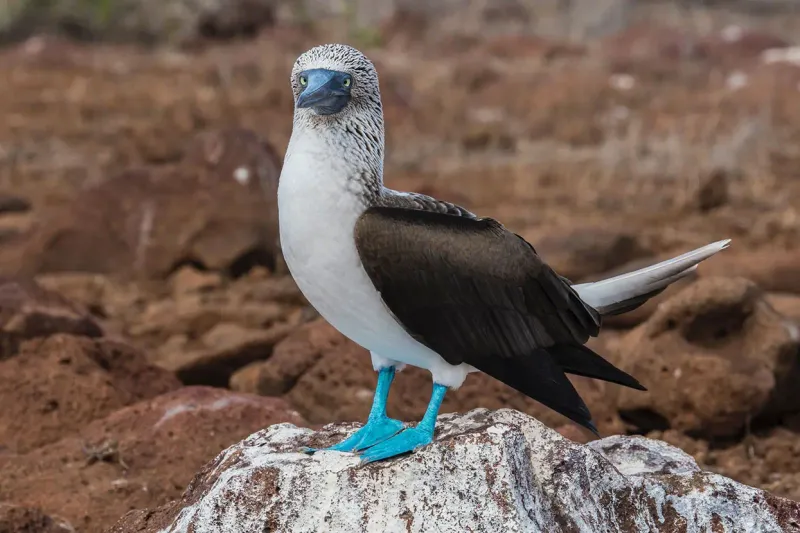
The Blue-footed Booby is a charismatic bird that captures the hearts of visitors with its comical appearance and unique courtship rituals.
These seabirds are easily recognized by their vibrant blue feet, used to attract mates. The bluer the feet, the more attractive the male is to potential partners.
Found along the coastlines, these birds engage in elaborate dances, lifting their feet and spreading their wings to woo females.
Their comical behavior and striking appearance make them a favorite among birdwatchers and photographers alike. Breeding colonies can be seen on islands like Española and North Seymour.
Unfortunately, like many Galápagos species, they face threats from human activity and environmental changes. Conservation efforts are in place to preserve their habitats and populations.
4. Galápagos Sea Lion

Found lounging on the beaches and rocky shores of the islands, these sociable mammals are known for their playful antics and curious nature. They often engage in acrobatic displays in the water, delighting onlookers with their agility.
Sea Lions thrive in the nutrient-rich waters surrounding the islands, feeding on fish and squid. Visitors can often observe them basking in the sun or swimming gracefully along the coast. Pups are born on land and spend a significant time nursing and playing with their mothers.
Despite their playful demeanor, these sea lions face threats from climate change and human activity. Conservationists are actively working to protect their habitats and ensure their survival.
5. Galápagos Penguin
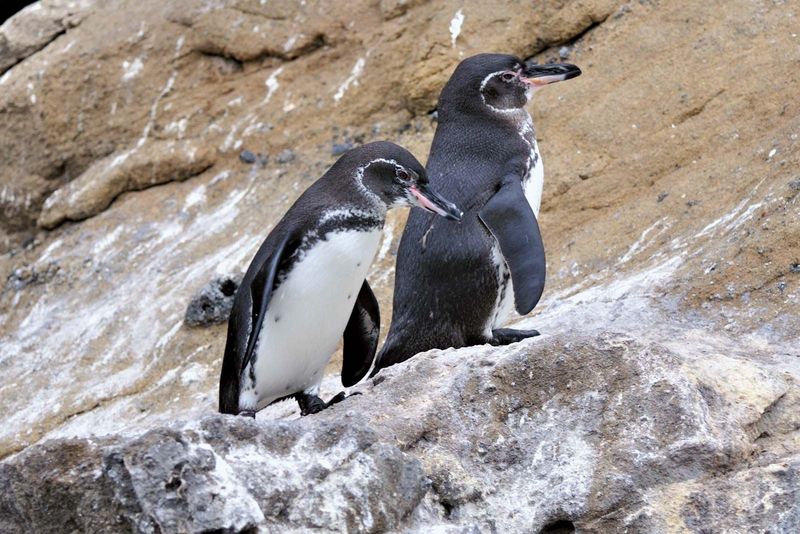
The Galápagos Penguin is a unique species, being the only penguin found north of the equator. These small penguins are well adapted to the warm climate, thanks to the cool Humboldt and Cromwell currents.
They possess a distinct appearance with their black and white plumage and a charming waddling gait.
Found primarily on the islands of Fernandina and Isabela, these penguins are social creatures, often seen in groups near the shore. They feed on small fish and crustaceans, diving expertly to catch their prey. Their breeding behavior is fascinating, as they form monogamous pairs and share parenting duties.
Sadly, the Galápagos Penguin faces challenges from environmental changes and human disturbances. Conservation efforts are in place to monitor their populations and protect their habitats.
Seeing a Galápagos Penguin in its natural environment offers a rare glimpse into the adaptability and resilience of wildlife.
6. Darwin’s Finch
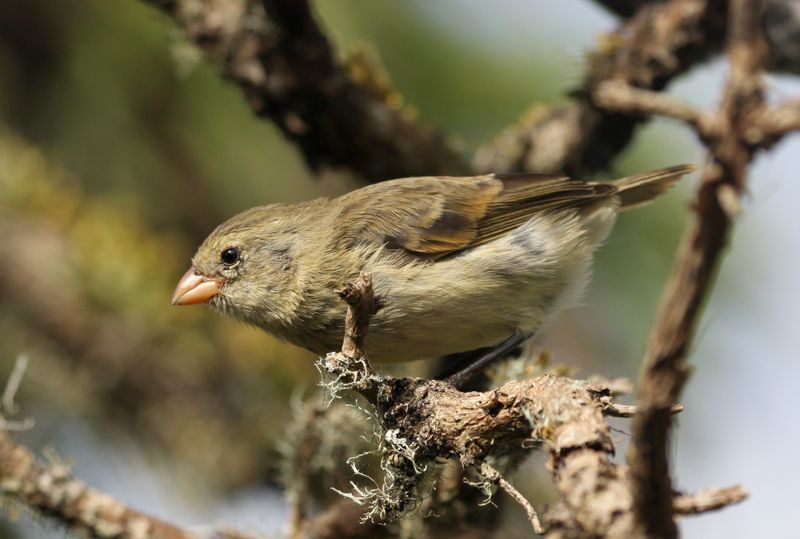
Darwin’s Finches are a group of small birds that played a pivotal role in Charles Darwin’s theory of evolution by natural selection. These finches exhibit a remarkable variety of beak shapes and sizes, each adapted to different feeding habits and environments.
Found across the Galápagos Islands, these birds demonstrate how species can evolve to fit specific ecological niches. Some finches have strong, thick beaks for cracking seeds, while others possess slender beaks for picking insects. This diversity in beak morphology highlights the islands’ diverse ecosystems.
These finches are a living testament to the power of evolution and adaptation. Observing them in their natural habitat provides valuable insights into the processes that shape life on Earth. Conservation efforts continue to ensure that these unique birds thrive for generations to come.
7. Flightless Cormorant

This bird is found only in the Galápagos Islands, specifically on Fernandina and Isabela. These birds have evolved to lose their ability to fly, adapting instead to an aquatic lifestyle. Their small, stubby wings are perfect for diving, but not for flight.
These cormorants hunt for fish and eels along the coastal waters, using their powerful legs and webbed feet to propel themselves underwater.
Their striking turquoise eyes and unique appearance make them a fascinating subject for wildlife enthusiasts and photographers.
Unfortunately, the Flightless Cormorant faces challenges from predation and environmental changes. Conservation measures are essential to preserve their populations and habitats.
8. Waved Albatross
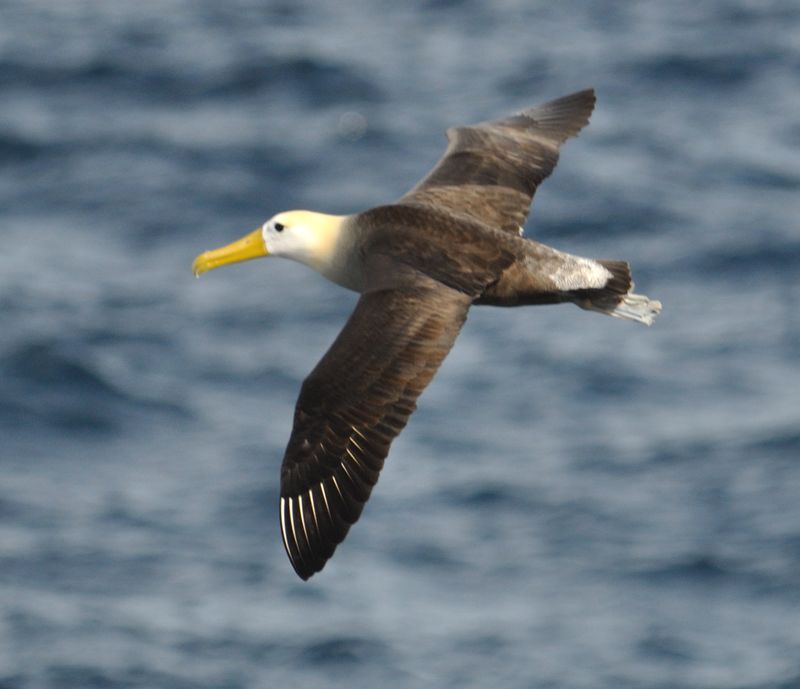
The Waved Albatross is a magnificent seabird that finds its breeding grounds on Española Island in the Galápagos. Known for their graceful flight and impressive wingspan, these albatrosses are a sight to behold as they glide effortlessly over the ocean.
During the breeding season, they engage in elaborate courtship dances, featuring bill clacking and synchronized movements. These dances are essential for pair bonding and are a delight to witness. The Waved Albatross’s name derives from the unique wave-like patterns on its wings.
Sadly, their population is vulnerable due to environmental threats and human disturbances. Conservation efforts are vital to protect these majestic birds and their habitats.

